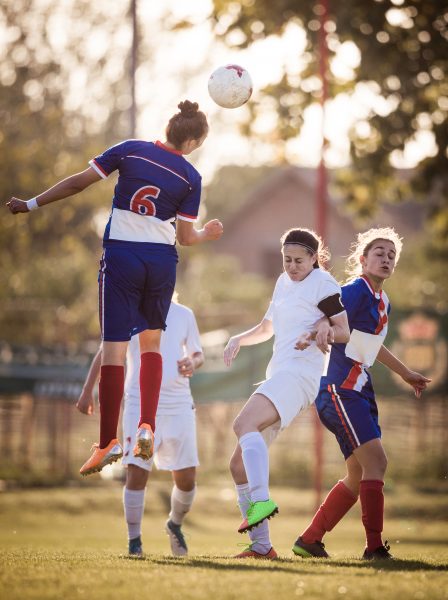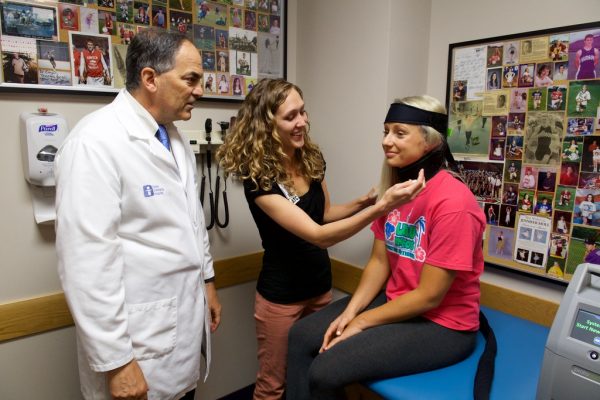
Akron Children’s researchers are working to gain approval for a new standard of care in concussion protocol for kids. Read the below Q&A to see if your child qualifies to be part of the study.
For decades, ice has been used to reduce pain and swelling in muscle injuries and now recently published research by Akron Children’s has found the same to be true for concussions.
“We’re encouraged by the results of our cooling after concussion in teenage athletes pilot study that found cooling the neck and head areas significantly reduced symptoms such as headache and dizziness in concussed patients,” said Joseph Congeni, MD, director of the Sports Medicine Center at Akron Children’s. “Overall, patients who used the cooling technology had better outcomes, fewer complications and needed less follow-up. We hope the second phase of our study builds on these findings and cooling becomes the new standard of care for concussions in kids.”
While research on concussions for adults, particularly collegiate and professional athletes, is common, few studies focus on pediatrics. The Akron Children’s study, sponsored by TecTraum, is one of the country’s largest concussion studies focused on teenage athletes and is the first multicenter study led by the Akron Children’s Rebecca D. Considine Research Institute. By working with multiple sites, including C.S. Mott Children’s Hospital, Cincinnati Children’s and Dayton Children’s, researchers hope to more efficiently enroll patients in the study and present findings to the FDA on the benefits of cooling concussions early.
We asked the study’s lead researcher, Dr. Joe Congeni, how kids can be part of the study.
Q: Who can participate in the study?
A: After an initial evaluation, kids ages 12-21 who have experienced a sports-related concussion and are symptomatic such as confusion, headache, dizziness or blurry vision within 1 week of the initial head injury.
Q: What do kids experience if they’re part of the study?
A: We place kids into 2 test sets – one group uses the current standard treatment of care, which is rest and cocoon therapy or reduced brain stimuli. The other group receives 2 cooling treatments with the the yet-to-be FDA-approved Pro-2-Cool™ System.
Q: Do kids have to come back in for follow-up?
A: For those who receive cooling treatment, they need to return to the location where they were originally treated for 1 follow-up visit within 72-hours after the initial treatment was given.
Q: Does the cooling treatment hurt?
A: No. The cooling treatment is noninvasive. A liquid coolant is chilled by a device and then circulated through a wearable fabric wrap, which we refer to as a cooling cap. This fabric wrap or cooling cap is placed around the head (brain) and neck and adjusted for a snug, but comfortable fit for each patient.
Q: What does the cooling cap do?
A: The chilled coolant in the cap reduces the core temperature of the blood flow around the brain and main artery in the neck. The thought is lowering the blood temperature before it enters the brain will help insulate the brain from further damage while it’s in distress from the concussion.
Q: Why do you need to enroll more kids in the study?
A: Since the first phase of our study proved effective, we need more patients to build on these findings to gain FDA approval for cooling the brain/neck as the new standard of care for pediatric concussion in hospitals, clinics and on the field. We need about 75 more patients to participate in the study and hope our multicenter approach will help us reach that number faster.
Q: How can I enroll my child in the study?
A: Contact the Akron Children’s Sports Medicine Center at our main campus at 330-543-5311 or our Mahoning Valley location at 330-746-8071 for an evaluation. Akron Children’s primary care offices and athletic trainers at schools throughout northeast Ohio can also evaluate kids for inclusion in the study.

Dr. Congeni talks with a patient in the study as she’s fitted with the Pro-2-Cool™ System cooling cap.










